- Details
- Hits: 4920
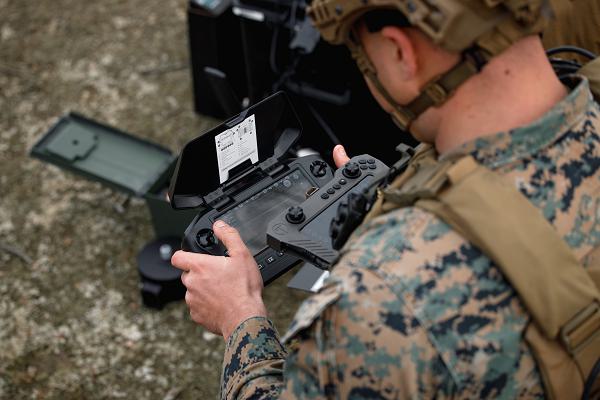
Quantico, Virginia. (April 11, 2025): In response to the proliferation of armed first-person view (FPV) drones on the battlefield, the Marines are standing up a dedicated attack drone team to counter the threat. In this photo by Corporal Timothy J. Brockup Jr., an FPV attack drone operator with Weapons Training Battalion flies a Skydio X2D unmanned aerial vehicle during a range demonstration.
The team, based at Quantico, will be responsible for FPV drone training and development in conjunction with the Marine Corps Warfighting Laboratory. They will also serve as the center of FPV drone operations helping shape and accelerate modern technologies.
- Details
- Hits: 4688
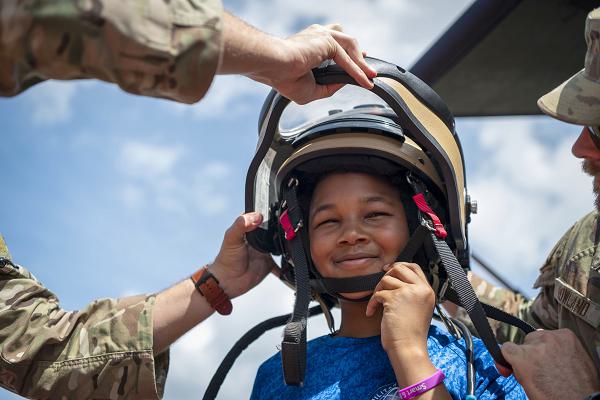
MacDill Air Force Base, Florida. (April 3, 2025): In this adorable photo by Airman 1st Class Alicia Campbell, a student from Tinker K-8 tries on an explosive ordnance helmet during a Contingency and Readiness Education Simulation event. Organized by the base Family Readiness Center, the meeting helps family members understand what their parents experience when they are deployed.
The DOD understands the negative impact deployment can have on military families and is determined to mitigate them. Unlike other professions, the military requires its members to be ready to deploy anywhere in the world to face potential combat. These frequent separations affect family members differently by age and the length of the deployment.
- Details
- Hits: 4849
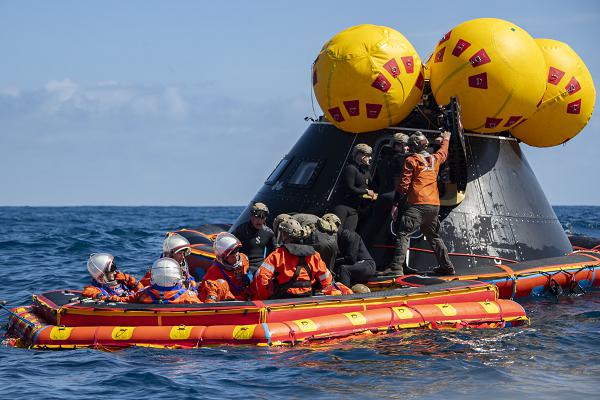
Pacific Ocean. (March 31, 2025): America is one step closer to returning to the Moon and beyond after the third successful recovery test of NASA’s crewed Artemis II spacecraft. In this photo by MC2 Olivia Rucker, Sailors assigned to the amphibious transfer dock USS Somerset and NASA personnel assist astronauts onto the “front porch”, an inflatable raft, during exercise Underway Recovery Test 12. The mission is to ensure the astronauts are recovered and safely transported to waiting ships within two hours of splashdown.
Artemis II’s ten-day mission will carry four astronauts on a flyby of the Moon, the first since Apollo 17 in 1972. Astronauts Reid Wiseman, Victor Glover, Christina Kock, and Canadian Space Agency’s Jeremy Hansen will reenter the earth’s atmosphere travelling 25,000 mph landing approximately sixty miles off the coast of California.
- Details
- Hits: 4601
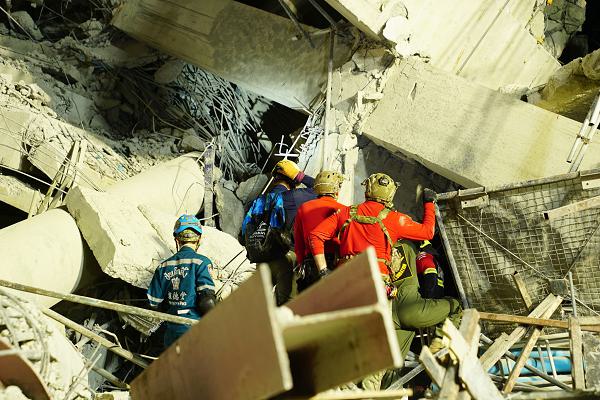
Bangkok, Thailand. (April 7, 2025): On March 28th, a magnitude 7.7 earthquake struck Myanmar (formerly Burma) causing damage as far away as Thailand, six hundred miles away. In this photo by Air Force Staff Sergeant Matthew Wisher, U.S. Indo-Command military personnel work alongside Thai first responders near the collapsed State Audit Building here. Fortunately for the people of Thailand, the U.S. already had humanitarian relief personnel in place due to the recent Cobra Gold military exercises.
As of this date, eleven people are confirmed dead and dozens of construction workers are missing after the building collapsed. Thai authorities also said thirty-two people were injured and another eighty-three remain missing.
- Details
- Hits: 5210
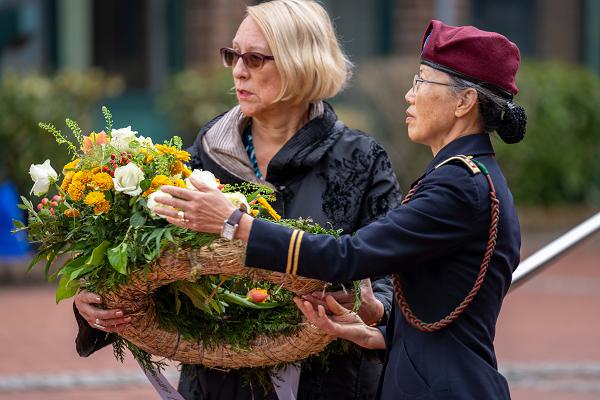
Hamminkeln, Germany. (March 31, 2025): When Americans are asked what was the biggest airborne operation in World War II they are likely to cite Market Garden, the ill-fated invasion of Holland. But it wasn’t the biggest. In the above photo, Army Captain Monika Stoy presents a wreath marking the 80th anniversary of Operation Varsity, the largest single-day airborne drop of the war.
The date was March 24, 1945, and the allies had reached the Rhine river, Germany’s last natural barrier to an allied invasion. Breaching the Rhine would allow the Allies to access to Northern Germany and ultimately Berlin. Led by British General Bernard Montgomery, allied forces mobilized 16,000 troops and thousands of aircraft in the final major airborne assault of the war.
Read more: OPERATION VARSITY… THE LARGEST AIRBORNE OPERATION IN WWII
- Details
- Hits: 3321
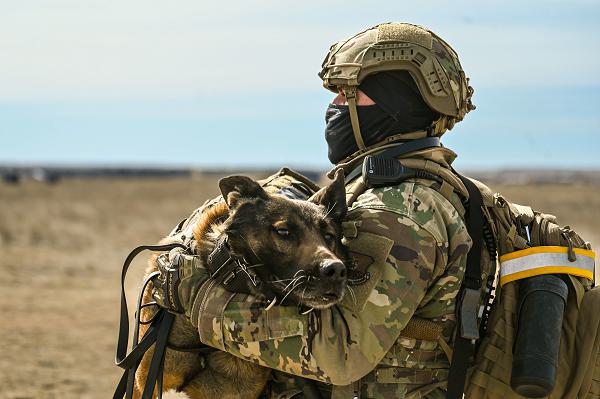
F.E. Warren Air Force Base, Wyoming. (April 5, 2025): This sprawling base is home to the Air Force’s 90th Security Forces Squadron which is responsible for training K-9s to become a warfighters best friend. In this photo by Airman 1st Class Mattison Cole, Senior Airman Dariel Gonzalez Ramos, a military working dog handler, carries his partner Rex after being fired upon by opposing forces during substance detection training.
Detection training for Military Working Dogs (MWDs) and their handlers is focused on nuclear security, explosives, drugs, and identifying human remains. K-9’s are conditioned by their handlers to associate specific scents with rewards, starting with controlled environments and gradually introducing real-world scenarios.


